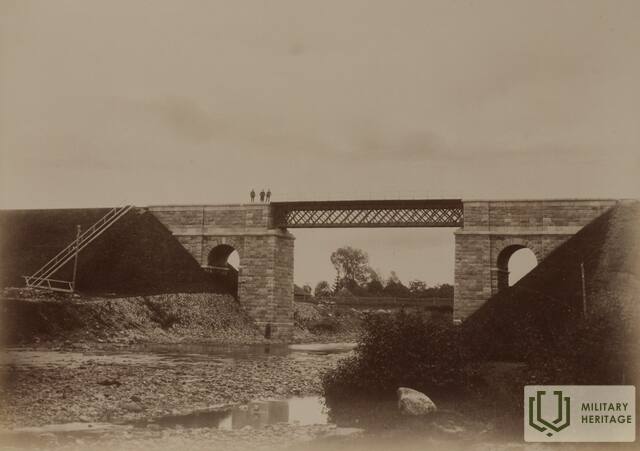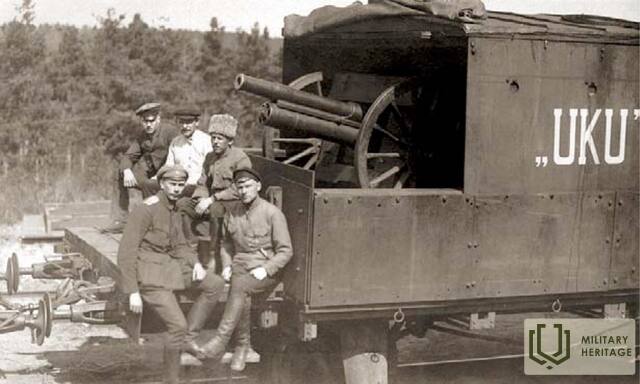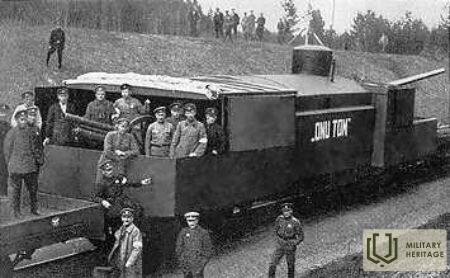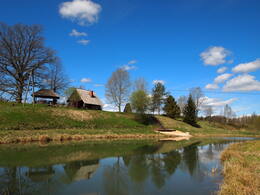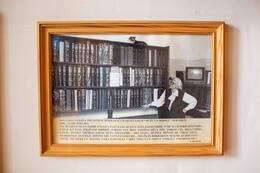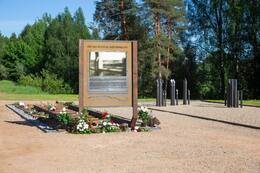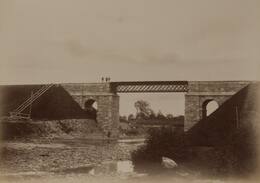Mūšis prie tilto per Amatos upę
Cėsių mūšis yra vienas reikšmingiausių Latvijos nepriklausomybės karo etapų ir užima reikšmingą vietą ir Estijos nepriklausomybės karo istorijoje.
Cėsių mūšis yra vienas svarbiausių Latvijos nepriklausomybės karo etapų. Jis taip pat užima svarbią vietą Estijos nepriklausomybės karo istorijoje. Latvijos Respublika buvo įkurta 1918 m. lapkričio 18 d. Jau 1918 m. gruodžio mėn. neseniai įkurtai Latvijos laikinajai vyriausybei teko organizuoti gynybą nuo bolševikų kariuomenės, artėjančios iš Sovietų Rusijos, grėsmės. 1918 m. gruodžio pabaigoje neseniai suformuoti Nacionalinės gvardijos daliniai, vokiškai – Landesveras, kuriuos sudarė Latvijos, Vokietijos ir Rusijos daliniai, atsitraukė į Kuržemę. Tuo pačiu metu Laikinoji Latvijos vyriausybė kreipėsi pagalbos į Estiją, kur 1919 m. vasarį Estijoje gyvenantys latviai pradėjo formuoti vadinamąją Šiaurės Latvijos brigadą, kuri buvo įtraukta į Estijos kariuomenę. 1919 m. balandžio 16 d. vokiečių Landesvero daliniai surengė perversmą Liepojoje, nuversdami Kārlio Ulmanio vadovaujamą Laikinąją Latvijos vyriausybę ir įkurdami savo vyriausybę, vadovaujamą pastoriaus ir rašytojo Andrijevo Niedros. Kai 1919 m. gegužės 22 d. Landesvero daliniai atgavo Rygą, tai visiškai demoralizavo sovietų pajėgas, ir jos greitai atsitraukė iš Vidžemės į Latgalą. Landesvero daliniai sekė paskui juos, kol susidūrė su Estijos armijos ir Šiaurės Latvijos brigados daliniais. Tarp abiejų pusių prasidėjo konfliktas, kuris išsivystė į Cėsių mūšį.
Mūšis prie tilto per Amatos upę įvyko 1919 m. birželio 5 d. tarp Estijos armijos šarvuočių ir Vokietijos landesvero dalinių. Šis susidūrimas pradėjo pirmąjį Cėsių mūšio etapą, kuris truko iki paliaubų pabaigos birželio 10 d. Cėsių mūšiai atsinaujino su nauja galia birželio 19 d., kai Landesveras ir Geležinė divizija atakavo Limbažius ir vėlesnį puolimą Valmieros kryptimi. Per kelias intensyvių kovų dienas Estijos armija ir Šiaurės Latvijos brigados daliniai sustabdė puolimą, pradėjo kontrataką ir galiausiai nugalėjo vokiečius. Konfliktą paaštrino abiejų pusių nelankstumas dėl karinių operacijų Vidžemėje – Estijos armijos ir Šiaurės Latvijos brigados daliniai puolė iš šiaurės ir užėmė teritorijas iki Valmieros, sėkmingai žygiavo Gulbenės ir Maduonos link, pasiekdami Jėkabpilį, o Landesvero daliniai turėjo pasiekti Apės – Alūksnės apylinkes. Ierikių–Gulbenės ir Ierikių–Valkos geležinkelio linijos buvo svarbios, suteikė transporto ir tiekimo galimybių. Todėl galimybė kontroliuoti strateginį geležinkelio mazgą Ierikiuose buvo svarbi abiem konflikto pusėms.
Išlaisvinus Šiaurės Vidžemę iš bolševikų, birželio 2 d. į Cėsį atvyko Šiaurės Latvijos brigados vyriausioji vadovybė. Tuo pačiu metu į Ierikius atvyko šarvuotas vokiečių traukinys, pareikalavęs leidimo žygiuoti į Cėsį. Kitomis dienomis vyko jėgos demonstravimas, intensyvus susirašinėjimas ir derybos tarp Estijos armijos, Šiaurės Latvijos brigados ir Landesvero atstovų, kiekvienai pusei siekiant savo tikslo: Landesverui – tęsti puolimą į šiaurę, o Estijos armijai – priversti Landesverą trauktis iki Gaujos upės žiočių – Siguldos – Nytaurė – Vecpiebalga – Jaungulbenė linijos.
Siekdami išsiaiškinti geležinkelių padėtį ir patikrinti, ar vokiečiai jų negriauna, birželio 5 d., apie 13:45 val., du Estijos šarvuočiai traukiniai – Nr. 2 ir Nr. 4 – lėtai pradėjo žvalgyti padėtį Rygos kryptimi. Traukinius lydėjo pulkininkas leitenantas Nikolajus Rėksas, kuris buvo atsakingas už derybas su Landesveru, Šiaurės Latvijos brigados štabo viršininku pulkininku leitenantu Voldemāru Ozolu ir Jungtinių Amerikos Valstijų kariniu atstovu kapitonu Dawley (arba, remiantis kitais pranešimais, pulkininku Warwicku Greene'u). Gerai susipažinęs su vietos sąlygomis, į operaciją buvo paskirtas ir neseniai suformuoto 2-ojo Cėsių pėstininkų pulko 8-osios studentų kuopos kareivis Kārlis Dzirkalis. Netoli tilto per Amatą sargybos kareivis sustabdė traukinį, pranešdamas, kad vokiečiai užminavo tiltą. Sapierams apieškojant tiltą, iš kitos pusės staiga pasigirdo šūviai, sužeidę Estijos seržantą ir nužudę karininką. Tuoj pat iš netoliese esančio miško pasirodė Landesvero kareivių grandinė ir atidengė ugnį į šarvuotą traukinį. Tuo pačiu metu vokiečiai bandė apsupti kitą traukinį, bet šis juos atmušė artilerijos ugnimi.
Cėsių mūšis sustabdė ir apribojo Vokietijos plėtrą Pabaltijyje. Šių mūšių mastas prilygsta vadinamajai Bermontiadai 1919 m. rudenį netoli Rygos. Estijoje jie vadinami Võnnu laheng, o šių mūšių pergalės kulminacija – Pergalės diena birželio 23 d. – švenčiama kaip nacionalinė šventė.
Sužinokite daugiau apie Cėsių mūšį specialiame turistiniame maršrute: Cėsių mūšio pėdsakais - https://militaryheritagetourism.info/en/tours
Susijusi laiko juosta
Susijusios temos
Susijusios vietos
poilsio vieta „Miško mūšis“ (Meža kaujas) – Cėsių mūšių svarbiausios veiksmo vietos prie Amatos tilto
Poilsiavietė, pavadinta „Miško mūšiais“, yra pagrindinėje Cėsių mūšių vietoje, netoli Amatos tilto. Lankytojai gali klausytis pasakojimų apie Cėsių mūšius ir dalyvauti įvairiose veiklose, įskaitant žygius pėsčiomis ir išvykas po svarbiausias Cėsių mūšių vietas bei komandines kovas. Pabaigoje lankytojai gali mėgautis gaivinančia karo meto sriuba. Geležinkelio tiltas per Amatą atliko labai svarbų vaidmenį visame Nepriklausomybės kare, nes čia įvyko pirmieji Estijos armijos susidūrimai su Landesveru. 1919 m. birželio 5 d. prie geležinkelio tilto per Amatą įvyko pirmasis Estijos armijos šarvuočių mūšis su Baltijos landesvero daliniais. Landesveras, žinodamas, kad artėja šarvuotasis traukinys, užminavo geležinkelio tiltą ir užėmė pozicijas Amato sodyboje ant upės kranto, ruošdamasis galimam mūšiui. Tiltas per Amatą žymėjo sieną tarp Estijos pajėgų ir vokiečių. 1919 m. birželio 23 d. naktį, per Cėsių mūšius, landesveras paliko Cėsius ir atsitraukė iki Amatos upės ribos. Atsitraukdami vokiečiai sudegino Cėsių latvių draugijos namus ir susprogdino tiltą per Amatą.
Siūloma unikali galimybė stebėti 1919 m. birželio 5 d. įvykius per virtualios realybės akinius.
Melanijos Vanagos ir Sibiro kasyklos muziejus
Melanijos Vanagos muziejus įsikūręs Amatos kaimo mokykloje, Cėsių savivaldybėje. Muziejuje eksponuojama medžiaga apie rašytojos ir kultūros istorikės Melanijos Vanagos gyvenimą, literatūrinę veiklą, šeimą ir likimą: vaizdo medžiaga apie Sibirą ir ten gyvenančius tremtinius latvius bei Sibiro žeminė, nukelianti lankytojus į rašytojos tremties vietą Tiuchteco rajone, Krasnojarsko srityje. Žeminės išvaizda ir išplanavimas sukuria realistinį gyvenimo toli nuo namų vaizdą. Eminėje eksponuojami unikalūs istoriniai daiktai, atvežti iš Tiuchteto muziejaus: beržo tošies indas, vadinamas „tuesok“, molinis puodelis, vadinamas „krynka“, ir žibalinė lempa. Muziejuje rodomi vaizdo interviu su politiškai represuotais savivaldybės asmenimis ir 18 personažų iš Melanijos Vanagos knygos „Staiga nusikaltėlė: šešiolika metų Sibire“. Muziejaus virtuali paroda „BŪK SAVIMI!“. (http://esipats.lv) pasakojama apie penkių deportuotų vaikų ir jų tėvų, kuriuos sovietų valdžia neteisingai apkaltino „tėvynės išdavyste“, patirtį.
Tremtinių atminimo ženklas Amata stotyje – ešelonas Nr. 97322
Įsikūręs Drabešių valsčiuje, Amatos rajone, netoli buvusios Amatos stoties pastato.
Galima aplankyti tremtinių atminimo vietą su informaciniu stendu ir aikšte.
Iš viso 1949 m. kovo 25 d. ir vėlesnėmis dienomis iš Latvijos 33 ešelonais buvo deportuota daugiau nei 42 tūkst. žmonių.
1949 m. kovo 27 d., antrą valandą nakties, iš Amata stoties išvyko 62 vagonai – ilgasis ešelonas Nr. 97322 su 329 vyrais, 596 moterimis ir 393 vaikais.
Centrinis objektas bus 1318 įvairių dydžių ir spalvų metalinių stulpų. Kiekvienas iš jų simbolizuoja asmenį, deportuotą iš tuometinių Cėsių ir Alūksnės apskričių 1949 m. kovo 25 d. Ant kiekvieno stulpo įrašytas tremtinio vardas, pavardė, gimimo metai ir parapija – iš kurios vietos jis buvo ištremtas. Šiuo metu pačių tremtinių arba jų giminaičių parama įrengta 394 stulpai, o dar reikia 932 stulpų.
Idėjos autorius Pēteris Ozols taip pat turi savo rubriką, bet vis dar su tuometine pavarde – Ozoliņš, kuris būdamas šešerių metų su šeima 1949 m. kovo 26 d. buvo atvežtas iš Kosos parapijos į „Pērkoņiem“.
Informaciniame stende pateikiama informacija apie 1949 m. trėmimą ir SSRS represinių organų okupuotose Baltijos šalyse vykdytą operaciją „Priboi“ (Krantės banga), kuri buvo trėmimo pagrindas.
Geležinkelio tiltas per Amatą
Įsikūręs Cėsių rajone, Drabešių valsčiuje, šalia poilsio zonos „Meža kojas“.
Matomas geležinkelio tiltas per Amatos upę.
Geležinkelio tiltas per Amatos upę vaidina labai svarbų vaidmenį viso Nepriklausomybės karo metu, nes 1919 m. birželio 5 d. čia įvyko pirmasis mūšis tarp Estijos armijos šarvuočių ir Baltijos landesvero dalinių. Landesveras, žinodamas, kad artėja šarvuotasis traukinys, užminavo geležinkelio tiltą ir užėmė pozicijas „Amatos“ namuose upės krante, pasiruošęs galimiems karo veiksmams. Tiltas per Amatos upę buvo siena tarp Estijos pajėgų ir vokiečių.
Istorinių įrodymų apie įvykius prie Amatos tilto nėra išsaugota. Kadangi latviai šiuose įvykiuose nedalyvavo, nėra ir jų atsiminimų, yra estų kareivių prisiminimai, kiti šaltiniai. Galima teigti, kad tai buvo bendras estų ir amerikiečių mūšis prieš landesverą, nes estų šarvuotajame traukinyje buvo amerikiečių karininkas, kuris vėliau kovojo ir Antrajame pasauliniame kare. Apskritai Cėsių mūšiuose dalyvavo daug būsimų Antrojo pasaulinio karo karininkų ir vadų, ypač vokiečių pusėje.
Estijos šarvuotasis traukinys į Cėsį atvyko 1919 m. birželio 2 d., o po dienos nuvyko į Ierikius, kur vyko derybos su Landesveru, kurios buvo bevaisės, o birželio 5 d., kai šarvuotasis traukinys vėl artėjo prie Amatos tilto, prasidėjo susidūrimas su vokiečiais. Šarvuotasis traukinys po dienos dalyvavo ir mūšiuose prie Cėsių, kur padėjo Moksleivių kuopos kareiviams, kuriems grėsė apsuptis. Nors vokiečiai bandė išardyti bėgius, kad atkirstų traukinio atsitraukimo kelią, jam pavyko atsitraukti per Raunos tiltą.
1919 m. birželio 23 d. naktį, per Cėsių mūšį, landesveras paliko Cėsius ir atsitraukė prie Amatos upės. Atsitraukdami vokiečiai sudegino Cėsių latvių draugijos pastatą ir susprogdino tiltą per Amatą.
Virtualios realybės žiūronai „Cėsių mūšis“
Cėsių mūšis buvo vienas reikšmingiausių lūžio taškų Latvijos Nepriklausomybės karo (1918–1920 m.) eigoje. 1919 m. birželio 5 d., susidūrus Estijos armijos šarvuotiems traukiniams ir Landesvero daliniams netoli Ierikių geležinkelio stoties, prie tilto per Amatą, prasidėjo pirmasis Cėsių mūšio etapas. Šio įvykio atminimui netoli Ierikių stoties sukurtas turistinis objektas, siūlantis patirti istorijos istoriją, pasitelkiant šiuolaikinių technologijų galimybes – virtualios realybės pagalba. Penkių minučių trukmės vaizdo įrašą „MŪŠIS PRIE TILTO PER AMATĄ“ galima nemokamai peržiūrėti kiekvieną dieną virtualios realybės žiūronuose. Vaizdo įrašo trukmė: 5 min., LV su subtitrais LV, ENG, EST ir ES kalbomis.




